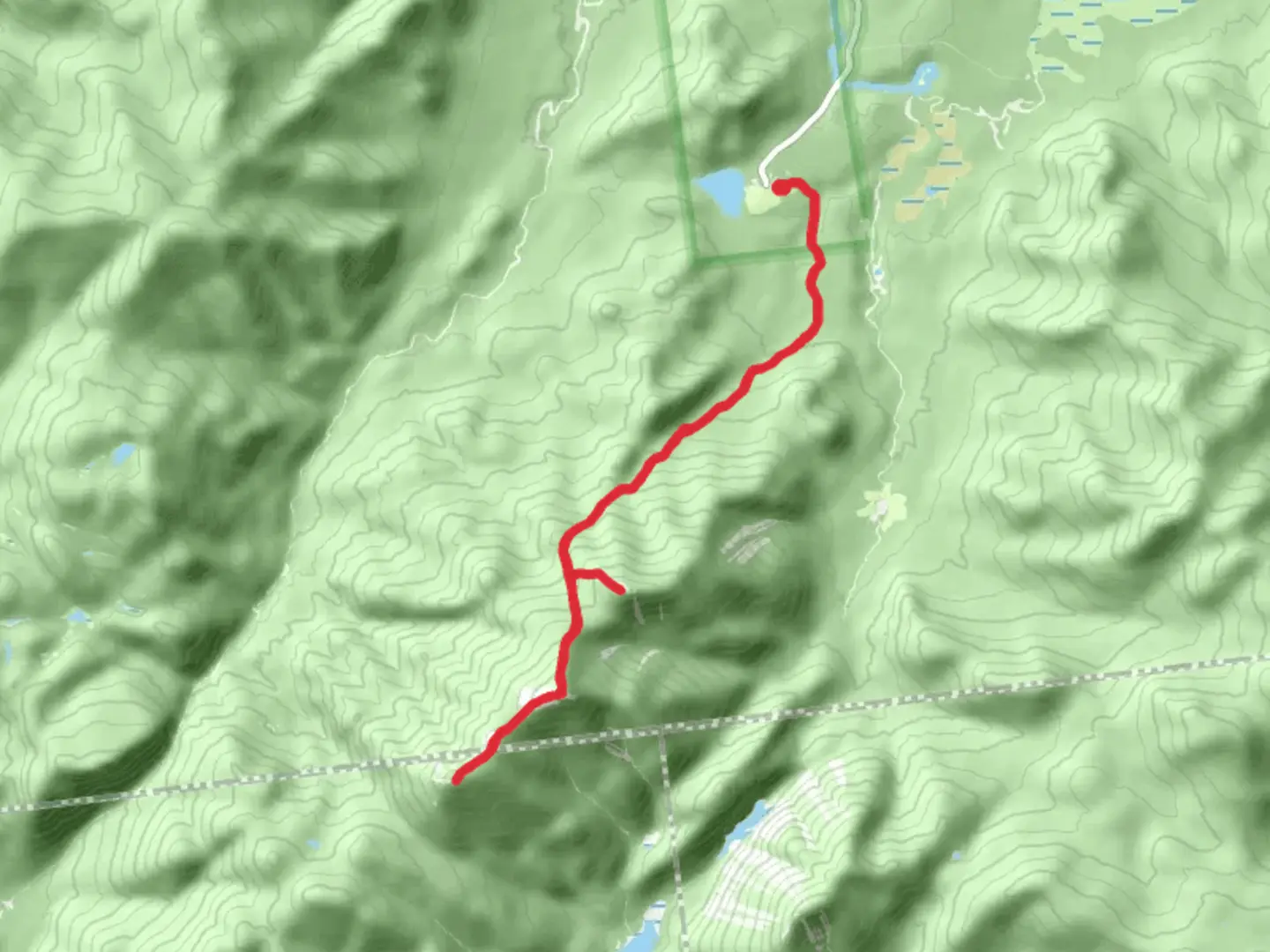
Download
Preview
Add to list
More
18.1 km
~1 day 1 hrs
1519 m
Loop
“Embark on a breathtaking Adirondack journey, scaling Algonquin and Iroquois Peaks for awe-inspiring vistas and rugged natural splendor.”
Embarking on the Algonquin Peak and Iroquois Peak Trail, hikers will find themselves exploring one of the most scenic routes in the Adirondack Mountains. The trailhead is located near Adirondak Loj Road, close to Essex County, New York, which is accessible by car. For those relying on public transport, the nearest significant town is Lake Placid, from which you can arrange a taxi or shuttle service to the trailhead.
Getting Started
The journey begins at the Adirondack Loj, where hikers can park their vehicles for a fee. The trail is a challenging loop that spans approximately 18 km (11.2 miles) and features an elevation gain of around 1500 meters (4921 feet). This trek is rated as medium difficulty, but don't let that fool you; it requires good physical fitness and proper preparation.
Ascent to Algonquin Peak
The initial section of the trail is a steady climb through a hardwood forest, where the sounds of nature envelop you. The path is well-maintained and marked, but it's always wise to have HiiKER downloaded on your device for navigation. As you ascend, the forest transitions to a boreal environment, and the terrain becomes more rugged. At approximately 5.6 km (3.5 miles), you'll reach the Wright Peak junction. Here, you can choose to add an additional peak to your hike or continue straight towards Algonquin.
Algonquin's Summit
Algonquin Peak, the second-highest mountain in New York State, offers breathtaking panoramic views. The summit, reached after about 6.4 km (4 miles) from the trailhead, is a great place to rest and enjoy the vistas of the surrounding High Peaks. The weather can change rapidly, so be prepared with appropriate gear.
Traverse to Iroquois Peak
From Algonquin, the trail descends slightly before climbing again towards Boundary Peak. This is an unmarked peak and serves as a connector to Iroquois. The path to Iroquois Peak is less traveled and can be quite rugged, so careful footing is necessary. Iroquois Peak itself provides a unique perspective of the Adirondacks and is less crowded than Algonquin.
Descent and Loop Completion
After enjoying Iroquois, hikers will backtrack over Boundary Peak and then descend via the Avalanche Pass Trail. This section is steep and can be challenging, especially in wet conditions. The trail winds down through a mature forest and passes by Avalanche Lake, which is a serene spot worth a short detour. The loop is completed upon returning to the Adirondack Loj.
Flora, Fauna, and Historical Significance
Throughout the hike, you'll encounter diverse flora, including alpine vegetation on the higher summits. Wildlife sightings might include the occasional peregrine falcon or black bear, so hikers should be aware and practice safe wildlife etiquette.
The Adirondack region is rich in history, with the High Peaks being central to the creation of the Adirondack Park. The area has been a haven for conservation and outdoor recreation for over a century.
Preparation Tips
Before setting out, ensure you have adequate water, food, and layers for changing weather. The use of trekking poles is recommended for the steep and sometimes slippery terrain. Always check the weather forecast and start early to maximize daylight hours.
Remember, this trail is a true mountain experience, and while it's a medium-rated hike, the conditions can be challenging. Proper preparation and respect for the natural environment will ensure a memorable and safe adventure in the heart of the Adirondacks.
What to expect?
Activity types
Comments and Reviews
User comments, reviews and discussions about the Algonquin Peak and Iroquois Peak Trail, New York.
4.44
average rating out of 5
9 rating(s)
